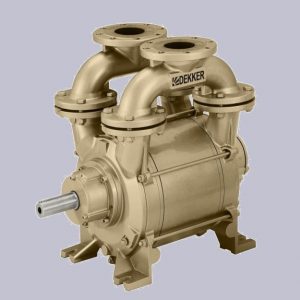
Choosing the correct industrial vacuum pump for your application can be a rather difficult task. Various processes and applications use different styles of pumps. Below is a quick comparison chart of the pros and cons of various pump technologies.
For the following reasons, liquid ring pumps are the most frequently used industrial vacuum pumps in the process industry. Rugged, sealed with the process solvents from the process stream, while having very low maintenance requirements are some important features.
If there is not a condensable in the process stream suitable for sealing the liquid ring vacuum pump, or a lower operating pressure is instead desirable, or there simply is not cooling water available, an oil-sealed liquid ring pump is often a good option.
A dry vacuum pump may be a suitable option for applications where there is absolutely no chance of condensation/process carryover. Please note, however, this pump becomes inoperable if it ingests liquids and/or solids. The repair costs are quite prohibitive.
Rotary vane pumps as indicated by the chart are much less expensive than the other vacuum pumps and ultimately less durable and thus often used in less industrial applications.
| Vacuum Pump Type | Typical Operating Range | Ability to Handle Process Carryover | Utilities Required | Initial Capital Cost | Maintenance Frequency | Repair Difficulty |
|---|---|---|---|---|---|---|
| Liquid Ring Water or Solvent-Sealed | > 30 Torr* | High | Cooling Water | Medium | Low | Low |
| Liquid Ring Oil-Sealed | > 15 Torr* | High (Oil may get contamintated) | None | Medium | Medium | Low |
| Dry Screw | > 0.1 Torr | Low to Medium | Small Amount of Water and Purge Gas | High | Low | High |
| Oil-Lubricated Rotary Vane | 1 - 150 Torr | Low | None | Low | High | Low |
| Rotary Piston | 0.001 - 100 Torr | Medium | None | Low to Medium | Medium | High |
*With additional technology, liquid ring operating range can extend down to 0.03 Torr
